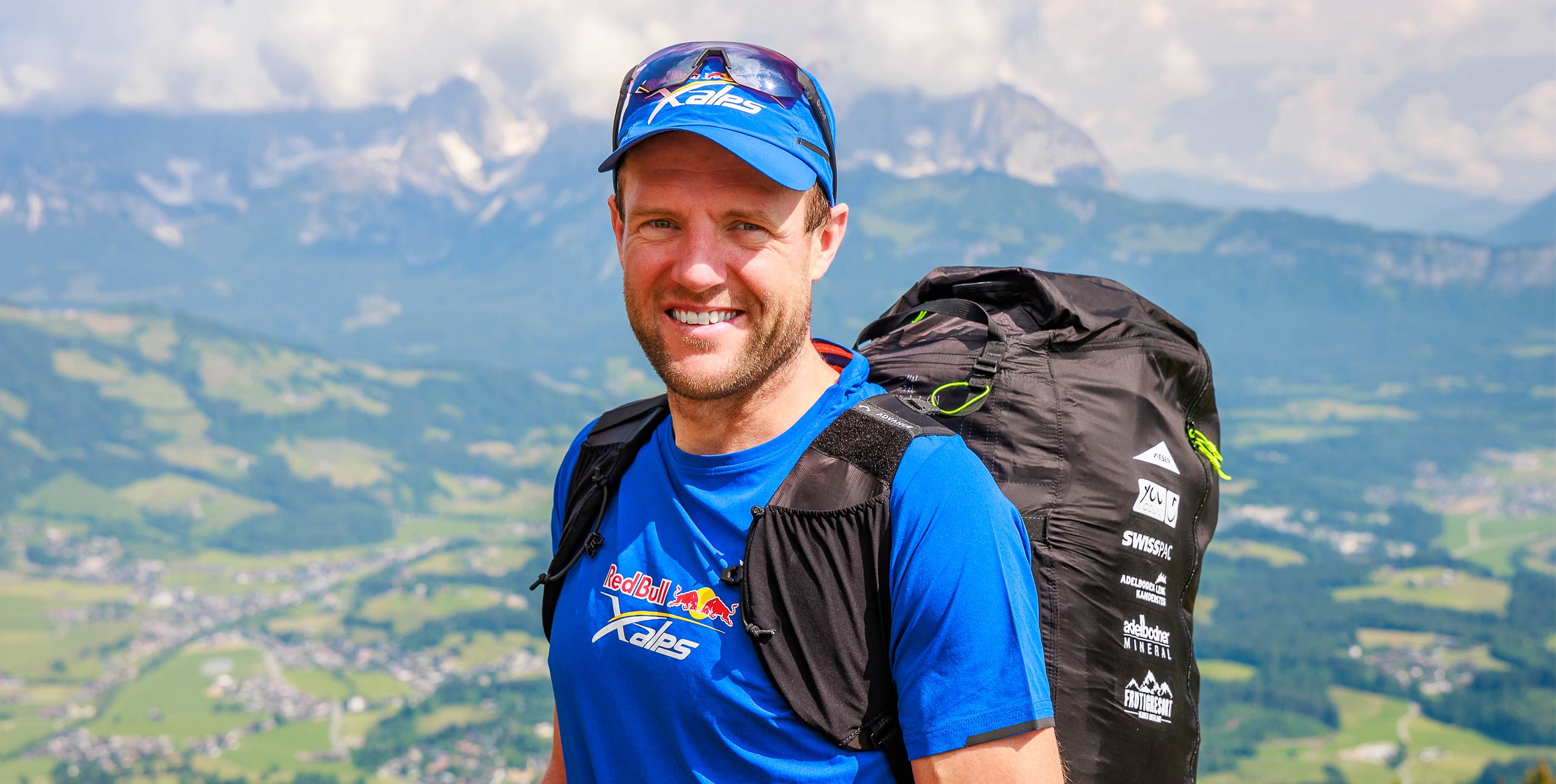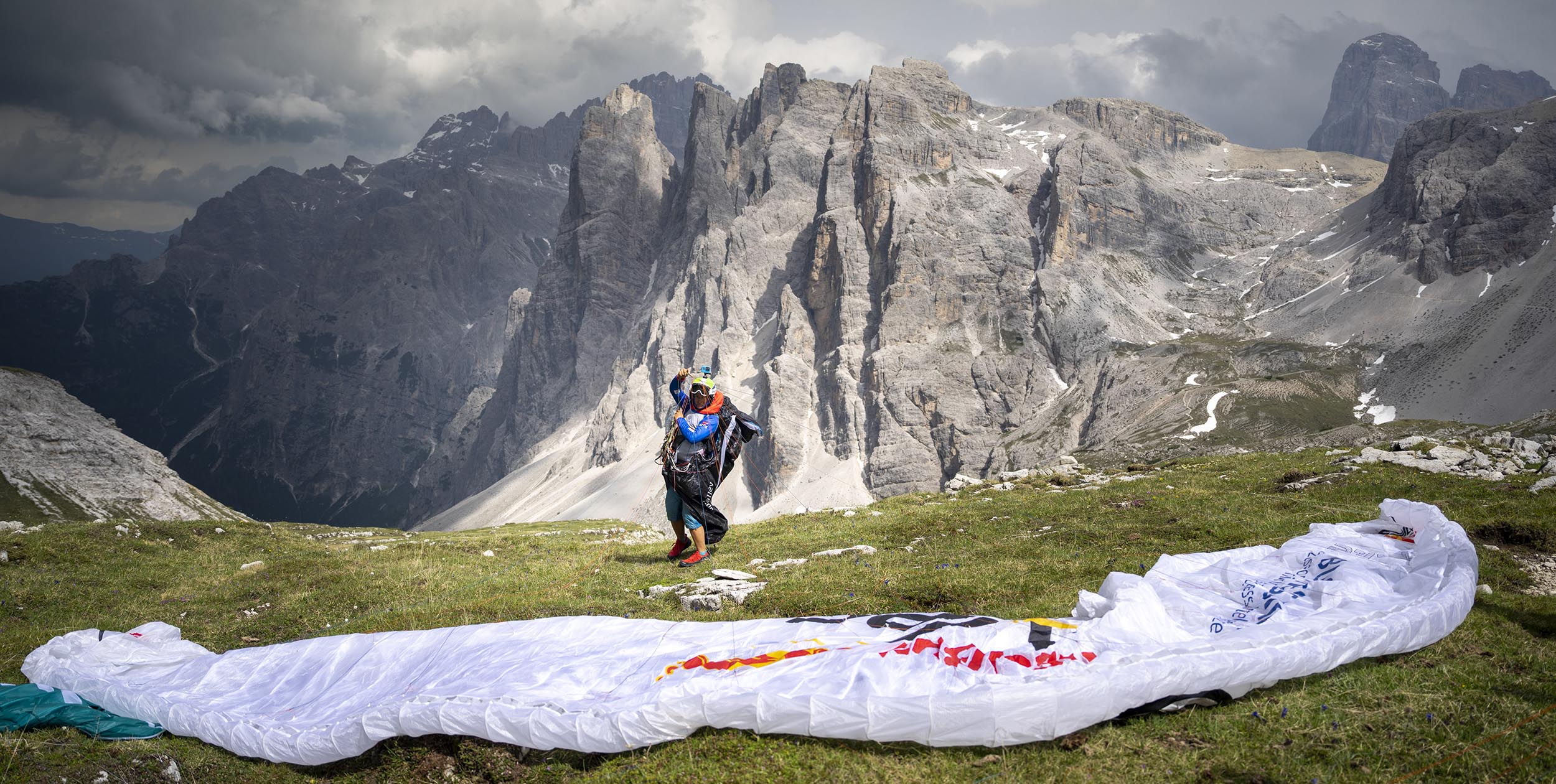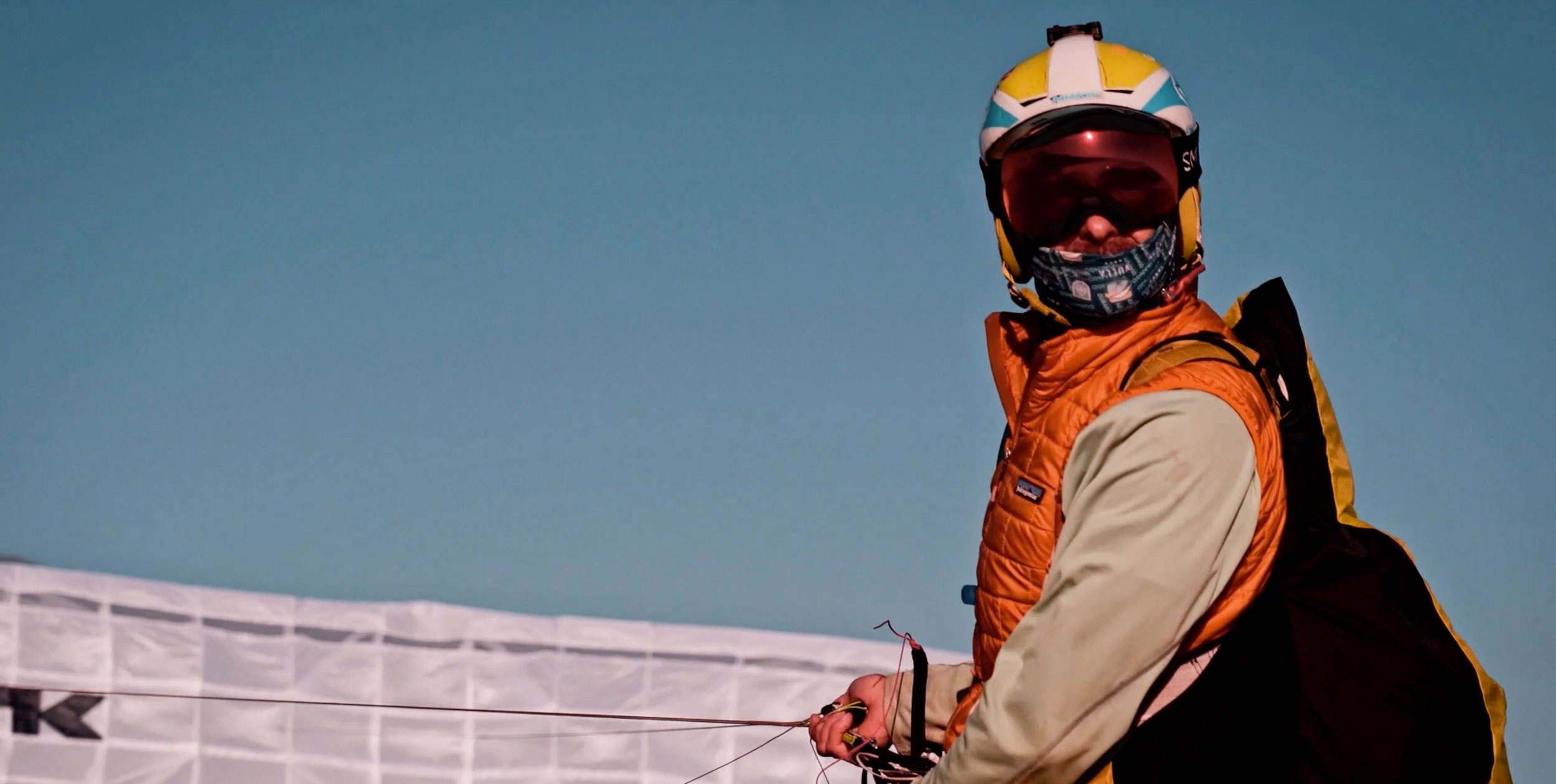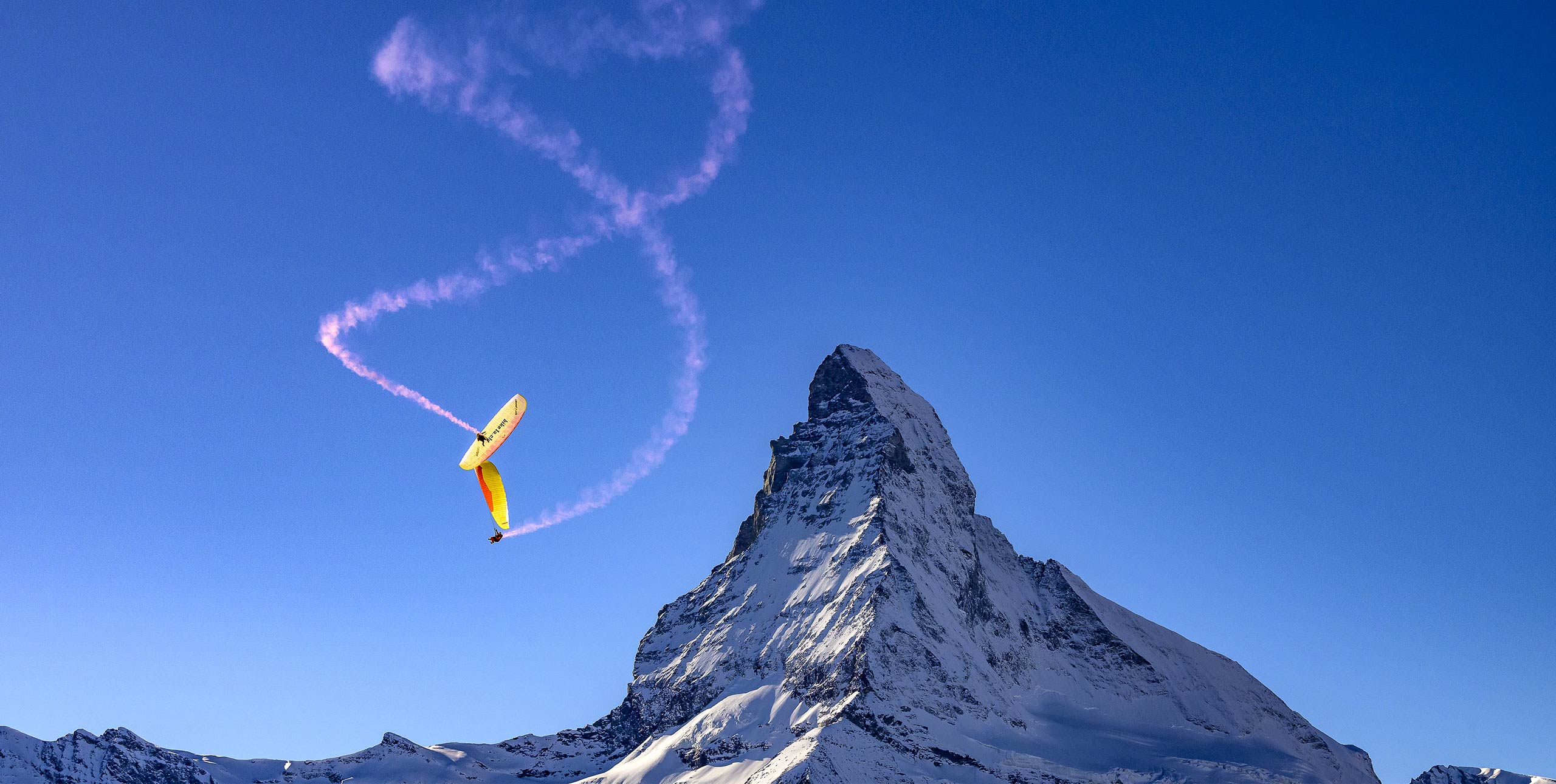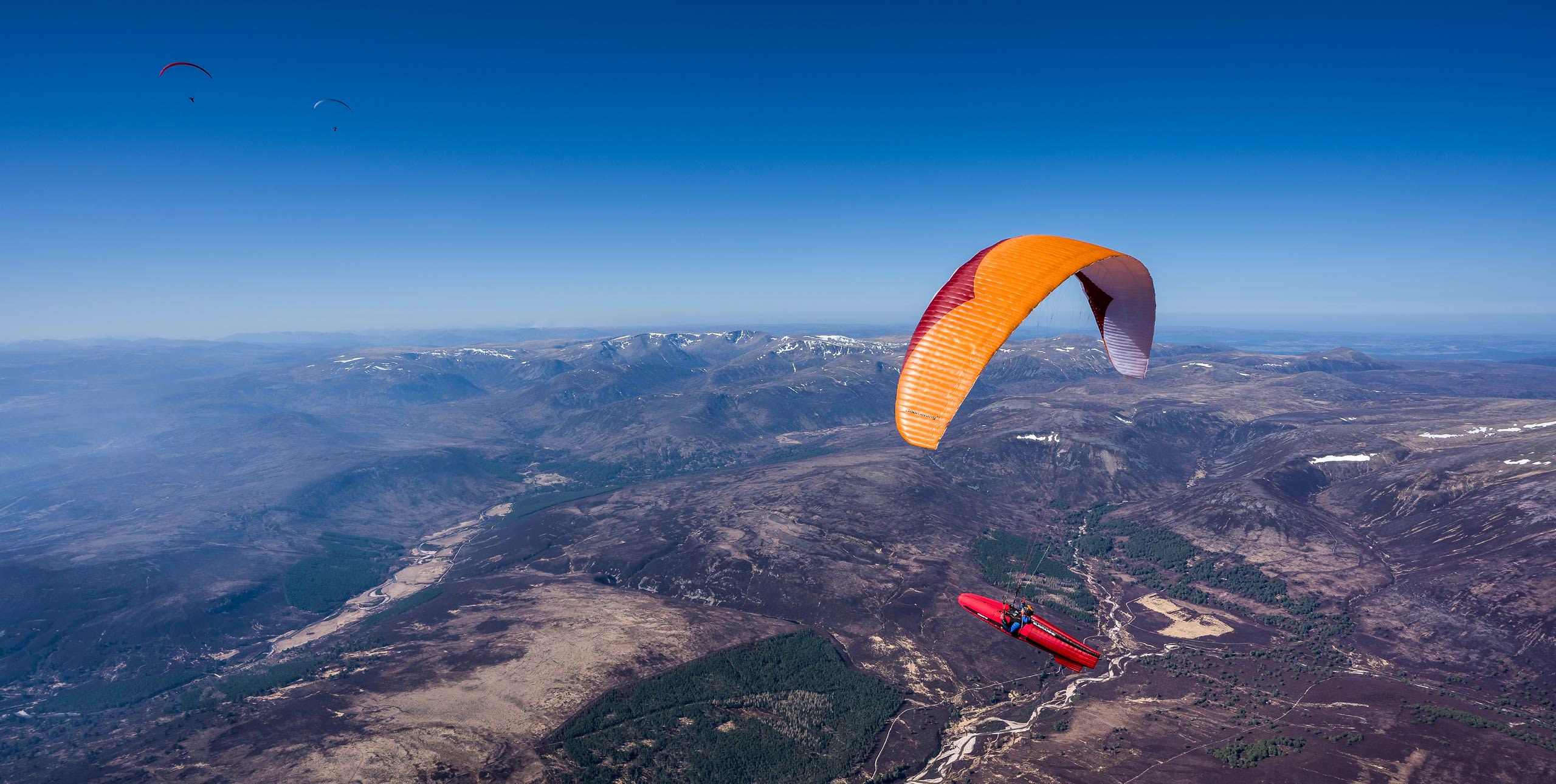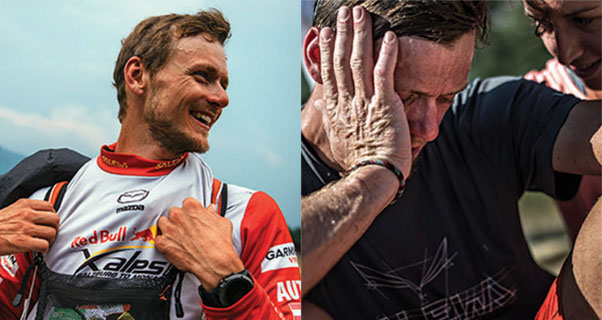
Flying like we do is the ultimate confidence trick – and we play it on ourselves. Matt Warren takes a look at what’s going on inside our heads

It’s all too easy to only think about paragliding as something physical. Buy the right equipment, develop the right skills and that 200km flight is yours for the taking. But at its heart flying is a head game: using – and understanding – your mind is the most important thing there is. Whether you’re a weekend pilot looking to get to the next level, or Chrigel Maurer winning yet another X-Alps, paragliding is a psychological sport.
“When it comes to flying well, technique is all of 5% or less,” says Mads Syndergaard, comp pilot, organiser and author. “Once you have worked out how to keep the thing open at speed, the rest is all in your head.”
So what is confidence? And how can you achieve it? ‘Being in the zone’ is more than just a cheesy cliché, as psychologist and Chrigel Maurer’s X-Alps supporter Thomas Theurillat knows only too well.
For him, confidence is about balancing your level of skill with the level of challenge you set yourself. Manage this correctly and, wherever you are in your paragliding career, you will be flying “in the zone”, that is to say confident, developing at the best possible rate – and safe.
The concept of flow
The concept of ‘flow’ was developed by Hungarian psychologist Mihály Csíkszentmihályi and describes the mental state in which you are fully focused on what you are doing. In this mindset you are positive, immersed in the task and performing at your best. Have a basic understanding of this, says Theurillat, and you’ll be the best pilot you can be.

A simple way of understanding it is via the diagram illustrated above, with your skill level on the horizontal axis and the level of challenge on the vertical. If your skill level is high and you only attempt basic challenges, you will be in the bottom right of the chart – and more than likely bored. On the other hand, try too challenging a task when your skill level is low and you will find yourself in the top left of the diagram – stressed, frightened and, quite possibly, dead. The key is to keep yourself in the ‘flow channel’ boosting the level of your challenges to match your developing ability and vice versa.
“If the mix between the level of challenge and your skills is in balance, you will have confidence, but you will also fly well,” explains Theurillat. “If it gets boring, you can buy a new wing or give yourself a higher task, while if you have too advanced a wing, you can get back in the channel with more training or by setting yourself easier goals. The key is to stay in the channel.
“During your career, it’s always a challenge to stay there. It’s like a staircase. Sometimes you take too big a step and you have to take a step down, but you should keep going along the staircase. The trouble is that psychology and confidence are invisible subjects, so this chart is a very good way of visualising it.”
The concept is widely used in sport – and business – and is an easy way to demonstrate how you should be flying if you want to do so confidently.
“It is something everyone should be aware of,” adds Theurillat. “You can say that if you fly in the top left corner, you die. While if you fly in the bottom right corner, you get bored and you quit the sport.
“People who fly for 20 years, somehow manage to stay in the flow channel. The challenges are given by nature and your equipment, and the skills are given by your training and your experience, and if you can’t balance the two then you get injured or you give up the sport.
“It’s not just pilots who need to understand this. Teachers do, too. Sometimes they push too hard, or not enough, and get their students into the wrong areas of the diagram. Confidence is a very abstract concept but this makes it concrete.”
Much of it is commonsense. Fly a hot wing on a thermic spring afternoon as a new pilot, for example, and you can predict that you will be rather anxious – this will not be good for your confidence. But there are also more tangible ways of knowing whether you are flying in the flow channel.
“Where you are in the flow channel will influence how you experience time, for example,” says Theurillat. “This is another helpful way of telling how much you are challenging yourself. If you are in the bottom right corner, it is boring and you will feel like you have too much time, while if you are in the top left you will feel like you never have enough time, you will be stressed.
“If you are flying in the channel, however, you won’t really experience time at all. You will have a three-hour flight and you won’t even know where the time went.”
You will also feel happy, like you have learnt something and, that magic word, confident.

Photo: Sebastian Marko / Red Bull Content Pool
Setting goals
With all of this in mind, you then need to think about setting yourself goals – crucially, goals that will bolster your confidence and improve your skills. And there’s a trick to this, too.
“I think that pilots who already have the wish to achieve certain goals, basically have what it takes to achieve them already,” says experienced X-Alps pilot Paul Guschlbauer. “For every achievement, the wish to do something is always the first step and will be the force that pushes you through until you finally do it.
“Then the planning starts: what skills do I need, what material is best, what’s the best way to pee for me during the flight? If you see that there are things that you are not good enough at yet, then you need some specific training.
“Think like this and you can take away all the pressure that comes with setting goals. If you can say that you prepared well and did the best you can, there is no room for disappointment.”
In other words, be realistic, set goals that you can achieve – and do your preparation. But there are also different kinds of goals.
“When it comes to goal-setting, there is a difference between a performance goal and a mastery goal,” explains Theurillat. “The performance goal is mostly focused on the result – for example, ‘I want to fly 100km’. The mastery goal, on the other hand, is more focused on the process – I want to have fun or to be a good pilot. If you are clear about your motivation then you are more happy.”
The distinction is an important one – as mastery goals are far less likely to result in disappointment. Of course, competition pilots have to focus on performance goals, but everyday pilots can remove this extra pressure from their flying.
“If you always set performance goals, then you can often get annoyed or disappointed that you don’t reach them,” explains Theurillat. “For some, it might be healthier to focus on the mastery goals, to simply be the best they can be.
“The goal-setting should also be in relation to the conditions. And it can sometimes be a good goal to simply say: ‘Today, I will have a holiday’. If you want to win the X-Alps you do need to set lots of goals, but you can also do too much goal-setting – and turn flying into work.”
Whatever your goal, preparation is key
“In everything, it’s crucial that you have that moment when you can believe that it is possible,” says Theurillat. “Many people ask why Chrigel [Maurer] and I work well together, and the crucial thing is that in 2009, six months before the first X-Alps, we realised that we wanted to do it, but had no clue, so we decided to do a test.
“In a sport like this, you can always try something first. It’s not like Base-jumping, or giving birth, where you can’t simulate it without doing it completely. In paragliding, you can make a small flight, a long flight or a very long flight. In that respect it’s like mountaineering, you can always find a step between where you are and the end goal.
“So we said, let’s go from Geneva to Monaco, X-Alps style, but without the pressure. But after this, and taking into account all the mistakes we made, we realised that it was possible. We then looked into what would make a perfect day, which helped a lot, too.
“Whatever your dream, make a test first – without the pressure. If you want to fly 100km, try to fly 50km without telling anyone. From this, you can get a clear picture about how it should be to fly 100km and from there you can achieve it.
“I also worked with Seiko Fukuoka, for example, who wanted to fly 400km in Australia. So that was an easy question: if you want to fly for 10 hours, can you drive a car for 10 hours? What do you eat and drink, and can you handle the toilet, because if you can’t drive for 10 hours, you can’t fly a paraglider for 10 hours.
“As humans, we can simulate things. We can imagine, but we can also analyse – and we should do both.”
Before the flight
The flow channel chart is a good way of thinking about your state of mind and the goals you set yourself but what do you do on the day itself? It all starts before you get anywhere near the hill. You need to prime yourself into a good state. This is more than just muttering an “I will have a good day” mantra. It starts with knowing your gear (you don’t want to discover your helmet strap’s broken on take-off), understanding the site, giving yourself time – and listening to your mind.
“It is essential to be enjoying yourself, to be looking forward to the task and the flying,” says Syndergaard. “The more you’re having fun the better a pilot you are. And the opposite is no less true; if you’re angry, sad, stressed or scared, you’ll fly like shit.
“I’ll only go to competitions that I think will be great fun, and have been known to go to lesser comps for the same reason; the level of BS involved when the big wheels of bureaucracy start turning can sometimes affect me negatively.
“Also, when there is too much at stake I have often seen, with myself and with others, that it is possible to run up quite a high fever for no apparent reason. This is the body’s way of telling you that you’re taking things too seriously.”
So when you reach take-off, give yourself a break – and actively avoid the things that make you feel negative. “Spend some quality me-time on launch priming yourself to have fun,” adds Syndergaard. “If you’re in a group and the briefings are stressful, avoid the briefings and saunter over to get the task details once the others are gone.
“If at all possible, launch when you want to launch, not when coincidence has you reaching the end of a launch queue. There will often be slots elsewhere on the hill where you can get off at your leisure, so use them.”
Of course, there are always days when you reach the take-off and the buzz evaporates. So what can you do if you just don’t feel like it?
“If you’re not confident or in a good mood, that is useful,” says Theurillat.
“Perhaps it’s OK that you have fear, because you don’t have the skills, or you worked too much during the week. It doesn’t always make sense to change your state of mind, there may be a good reason for it.
“If you’re pissed off, or you’re stressed, you should pay attention. It’s like your car showing an orange light on the dashboard. Then it’s not about just carrying on, but finding out why the light is orange and discovering what the problem is.
“If you are tired on take-off, don’t just go. Accept that you are tired, sleep for half an hour, have a can of Red Bull and reassess. You may then leave with a deficit, but it’s much better than ignoring the warning signs.”
In other words, you won’t become a better or more confident pilot by denying your state of mind – whatever everyone else around you is doing or saying. Instead, take a step back, sit down and listen to your mind. “You should try and become better at working out what is not perfect,” he adds. “It makes sense to have a positive attitude, but if it’s negative, try and understand why. Look at how you can change your attitude by changing facts, not just by trying to change your brain.”
There are, however, a number of psychological tricks you can use to make yourself fly better. “If you talk with people, some say what they want to do [an optimistic outlook], while others talk about what they want to avoid [a pessimistic outlook],” explains Theurillat.

The key is to move from the negative state into the positive one. But how?
“In your brain, the part where you make pictures and the part where you talk are not the same. Take cycling. You can say ‘I want to cycle’, or you can say ‘I don’t want to fall’. But if you close your eyes, you can’t make a picture of ‘I don’t want to fall’; you can only make a picture of ‘falling’ or ‘cycling’.
“If you are upset or stressed, you often focus on what you don’t want to happen, which means that your brain is always in this mistake world, endlessly talking to itself: ‘I don’t want a collapse, no collapse, no collapse.’
“If you focus on the flying, however, you can picture the open wing. You can think about how to keep it open and try new things. It is the difference between prevention focus and promotion focus. You should take off with a promotion focus, with positive pictures of a goal in your mind, not talking to yourself about what you don’t want to happen.
“If you’re stressed, it can be very hard to move between these two states, which is where it is very useful to have a positive friend who simply can ask, ‘Well, if you don’t want a collapse, what do you want instead?’ This question is a very helpful way of moving from a prevention to a promotion focus. If you have this person on take-off, then that is a good friendship. It is a common problem. Pilots often talk about avoiding the worst case: ‘Hey, if we take off now we may be down on the ground in five minutes.’ Instead, they should be talking about the best case: ‘If we go now, we could find a thermal and fly 120km’.”
In brief, don’t talk about the worst case, picture the best case – even if it sounds a little arrogant.
“Of course, thinking about best-case scenarios won’t always make them happen, but reality is usually somewhere between best- and worst-case. Here in Switzerland, it is considered very impolite to talk about all the good things you are going to achieve. But that doesn’t mean that you can’t think them.
“If you talk with good people, they often think big. Sometimes they think big and die fast because they think too big, but they also have this attitude, they think about the maximum, what’s possible. I do like to say that if your dreams don’t scare you, they aren’t big enough. Meanwhile, if you just do what’s in your comfort zone, you will keep doing the same thing, with the same results.”
In the air
Start in the right mindset and your flight will likely go as well as it can. And this can be as simple as just thinking about how much you’re going to enjoy yourself.
“Nowadays, I try to just imagine having fun, racing in the air with my mates, feeling good, maybe remembering good times in the past – anything to put myself in a good mindset,” says Syndergaard.
But if you’re feeling good, how do you know whether you’re getting a bit too cocky and over-confident? “If you’re honest, and you fly for yourself – rather than because of peer pressure – then you are better able to assess risk in the air,” says Theurillat. “If you are flying to prove you are the best, or it gets into an overly competitive or ego situation, then it gets dangerous.
“The good thing about paragliding is that there are several stages between negative feedback and dying. If you do wingsuit flying, then it can be that one mistake really is the last. In paragliding, you can be a beginner on an Enzo in springtime and you are likely to have a huge collapse and pull your reserve and scare yourself, but you probably won’t die. Nature is very honest and in paragliding will tell you if you are outside your zone.”
In other words, pay attention to what is going on – and listen to your mind. And if things start to feel too stressful, then there’s probably a very good reason for it. In these conditions, stopping is not the end of the world.
“On a good wing, I am never bored – I like flying comp wings,” says Syndergaard. “But being just a little bit disinterested is actually perhaps not such a bad thing; I have often been very sleepy/drowsy on good flights. I yawn a lot in the air. If I am ever terrified, though, then I go and land – I have flown enough to know not to ignore the signs. It hasn’t happened often, but it has happened.”
After flying
Focus on what you did right first – and don’t dwell on the problems. What you want to concentrate on is doing more of the ‘right stuff’ next time.
“If you land after 99km when you’re trying to fly 100km, don’t think about the missing kilometre, think about how you did so well and what else you could do to reach that goal,” says Theurillat.
And if you keep landing at 99km, start thinking about positive new ways of reaching the magic 100. “Mr Einstein said that the definition of stupid is to do the same thing over and over and expect a different output,” adds Theurillat. “If you try something and it doesn’t work and you try again by doing exactly the same, then it probably won’t work again. You have to be clever, you have to dream and analyse. You have to think about what you can change.”
And never forget that the head game matters, as Paul Guschlbauer knows. “At the X-Alps, let’s say that three pilots have the skills to win – one is the better pilot, one knows more about the Alps, the other is fastest on the ground – but all in all they have almost the same level of skill. Between them, it’s all about psychology. Skills can always be improved – but, in the end, your mind decides whether you can fully use them.”
This article was originally published in Cross Country 169 (May 2016). Published 10 times a year Cross Country Magazine is published by pilots, for pilots. It is available through subscription in print and digital formats. If you enjoyed this sample article, perhaps you’d consider subscribing and supporting the world’s only international free flying magazine?


